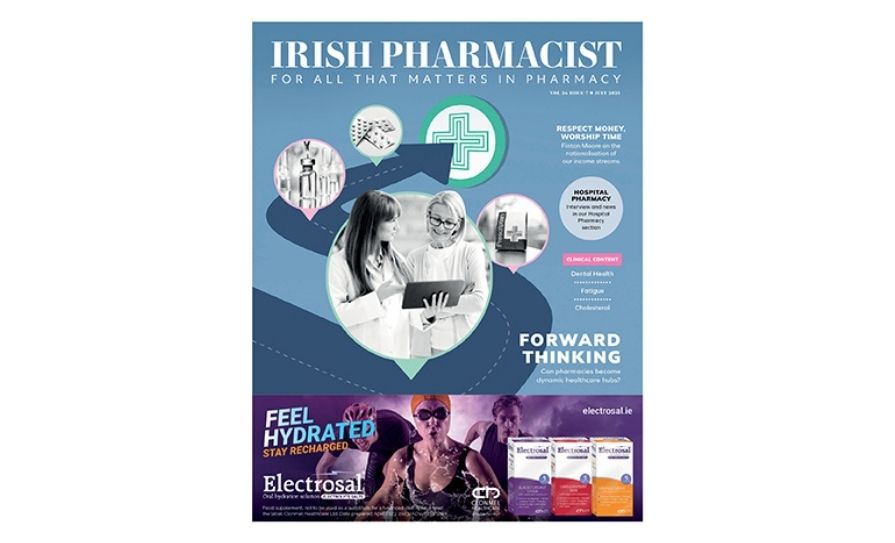An overview of infant health and nutrition and how the pharmacist can advise patients on giving their young children the best chance for good health as they grow
It is increasingly recognised that optimal delivery of paediatric care must be a collaborative effort between healthcare professionals from a range of disciplines. According to the HSE and the RCPI: “We earnestly believe that improving child health in Ireland will be realised by thinking differently, breaking traditional paradigms and joining together in a shared vision to tackle current and future challenges. This is the essence of this [paediatric] model of care.”1
The Executive and the Faculty of Paediatrics at the RCPI also emphasise the need to plan ahead for increased incidence of obesity, diabetes, atopic disease and allergy, among others, and inflammatory bowel disease, and have stressed how “the future direction should be to provide as much care as close to home as possible, and to achieve this, we must strengthen both primary and community care of children and adolescents. We must learn from international experience and work together across disciplines throughout the country to develop a child health service that meets the current and future needs of our children.”1
If this future direction for paediatric healthcare is planned and implemented properly, this means that pharmacists will be increasingly called upon as the most accessible source of primary care in the community, particularly in light of the expansion of the under-sixes contract with general practitioners. Within the EU, Ireland has the highest proportion of the population who are children — 25 per cent, compared with the EU average of 19 per cent. “Delivery of family-centered care as close to home as possible is at the centre of this model of care,” that authors stated (see SPOTLIGHT overleaf).1
Nutrition
Pharmacists, as well as other healthcare professionals, have a duty to encourage parents to make informed decisions based on evidence when it comes to breastfeeding and other nutritional options for their infants. A range of studies have shown the benefits of breastfeeding confers advantages in terms of growth, development and general health and can reduce the risk and/or severity of a number of diseases, including urinary tract infections, respiratory tract infections, otitis media, diarrhoea, and necrotising enterocolitis.2
In addition to essential nutrients, breast milk provides biochemical and immunological benefits, such as proteins, cytokines and hormones. However, breastfeeding is contraindicated in certain circumstances, such as when the infant’s mother has untreated active tuberculosis, if the mother has been impacted by HIV, and if the infant has galactosaemia.2 In the hospital setting, it is advised that barriers to breastfeeding include disruptive hospital policies, early discharge with inadequate follow-up procedures, and failure to place the infant at the breast immediately after birth. Mothers may also be prevented from breastfeeding by other factors, such as tiredness or insufficient time, embarrassment/inconvenience, pain in the nipples or breasts, and insufficient milk. Other barriers to breastfeeding include thrush, engorgement, mastitis and blocked ducts,2 however these can be overcome if the mother receives the appropriate level of support.
If it is not possible to breastfeed a child, parents should be advised on the range of formulas that are available for infants, including follow-on formulas, special formulas for preterm infants, and infants with intolerance to cows’ milk or allergies, although cows’ milk is not suitable as a main source of nutrition for children under the age of 12 months.2
Iron deficiency can be common in infancy and can lead to delayed mental or motor development, as well as anaemia. Follow-on formulas that are fortified with iron have been shown to improve levels of serum ferritin and haemoglobin and it has been suggested that inner-city infants who are not being breastfed should be prescribed iron-fortified formulas, as this has been shown to reduce declines in psychomotor development.2
Assessing the patient
While the pharmacist must establish the health status of the infant and mother in order to provide appropriate treatment or referral, this information should be obtained in a thorough but sensitive manner. As always, good communication is central to treatment and the PSI has stated that “pharmacists should be mindful of how they request information. It may be useful to explain to the patient why certain information is needed, ie, to be able to make a decision about the appropriate medicine and advice, or to recommend they need to see their doctor or another healthcare professional. It should be highlighted that if used correctly, medicines offer great benefit, but if used incorrectly, medicines have the potential to do harm.”3
The range of potential conditions in infants is extensive and detailed analysis is beyond the scope of this article, but the pharmacist will typically deal with presentations such as infant acne, colic, the common cold, coughing disorders, nappy rash, ear infections, jaundice, milia, vomiting and colic, among others, such as plagiocephaly.4
Colic can be a particularly distressing condition for both parents and their infant and may be diagnosed as crying for more than three hours per day for more than three days a week. Pharmacists should advise parents that the symptoms of colic can be eased by taking a careful record of what the breastfeeding mother eats and drinks; potentially switching formula brands; feeding the baby the appropriate amount and not too quickly; avoiding caffeine and chocolate; holding the infant correctly; comforting the baby with skin-to-skin contact; and/or simethicone drops.4
Seborrheic dermatitis, or cradle cap, is another of the most common infant conditions. Patients can be advised that cradle cap can resolve after several months but at times can also affect the infant’s eyelids, armpits, groin, and ears. Parents can be advised to gently wash the baby’s head each day with a mild shampoo. However, pharmacists may also see cases of scalp ringworm or scalp psoriasis, the symptoms of which may sometimes by mistaken as cradle cap by parents.5
Gastrointestinal issues in infants can be difficult for a parent to identify, as small amounts are normally regurgitated by infants after feeding, particularly in the early months of life. The pharmacist is well placed to reassure parents, assist them in modifying their feeding technique and if necessary, provide advice on thickening the baby’s formula mix. However, the pharmacist is also in a position to identify any underlying paediatric gastrointestinal problems, such as gastro-oesophageal reflux, and refer if necessary.
Pharmacists can be suspicious of gastro-oesophageal reflux if there is:
Poor weight gain, possibly because significant volumes of milk are being regurgitated.
Feed refusal or pain on feeding, possibly because of heartburn or oesophagitis.
Blood-streaked vomit (possibly an indication of oesophagitis).
Recurrent cough, wheezing or choking, possibly because of aspiration.
Episodes of apnoea, possibly because of vagal reflex triggered by acid reflux.6
Future initiative
It was recently announced that a new study is to look at the issue of ‘everyday pain’ in toddlers and young children, conducted by the Centre for Pain Research at NUI Galway. The definition of ‘everyday pain’ is described as bumps, scrapes and minor cuts and the study will explore how parents and their children respond to these events.7
The study will also examine how parents react to their child’s everyday pain and how a child learns from this and the influence it may have, for better or worse. Ms Grace O’Sullivan at the Centre for Pain Research at NUI Galway and lead researcher of the study commented: “Previous research has shown that children experience a painful incident approximately every three waking hours. Parents often deal with multiple incidents each day, and this study may be of interest to parents who want to know a little more about how to assess their child’s pain experiences.”
Participants are currently being recruited and more information on the study can be found at www.nuigalway.ie.







